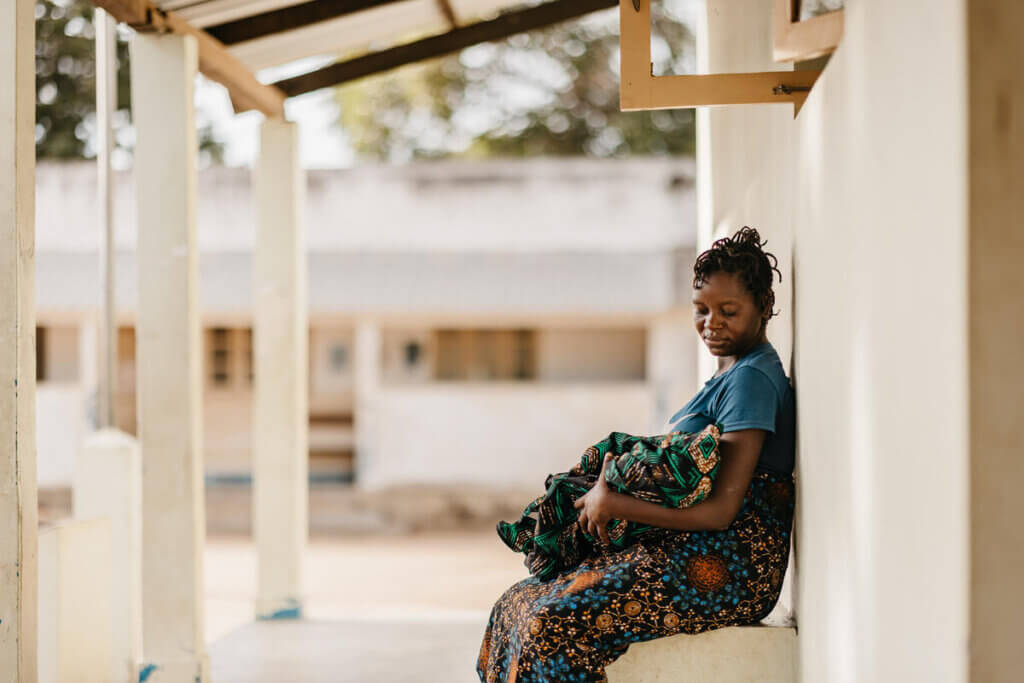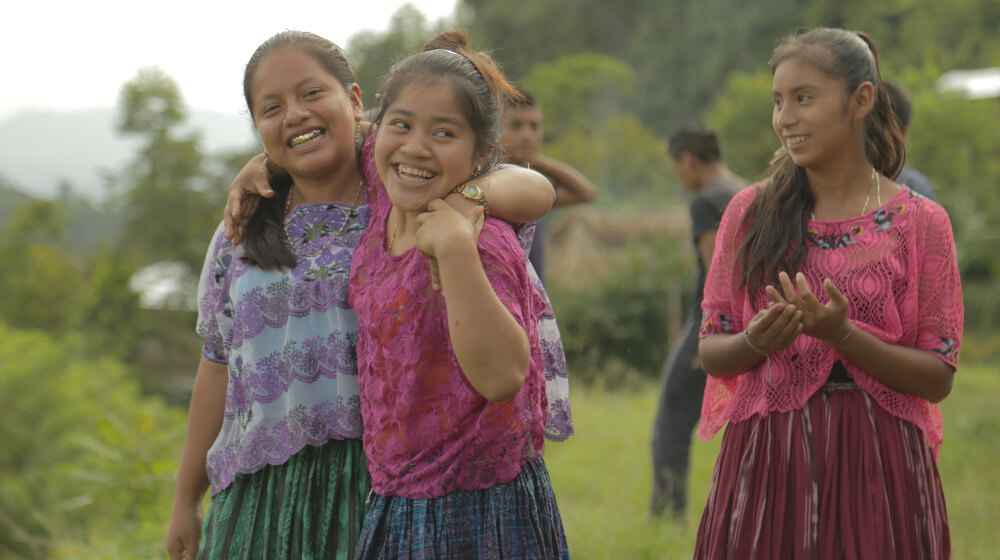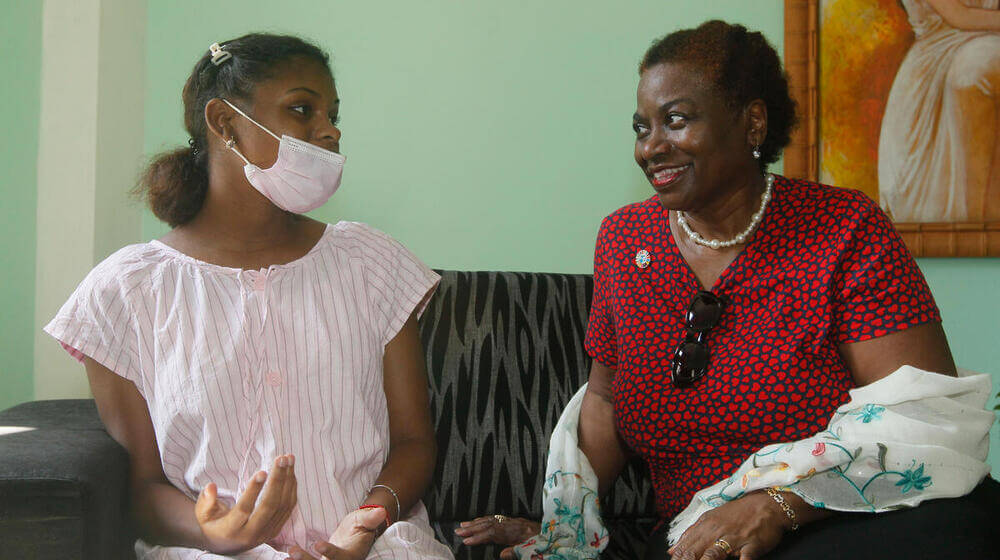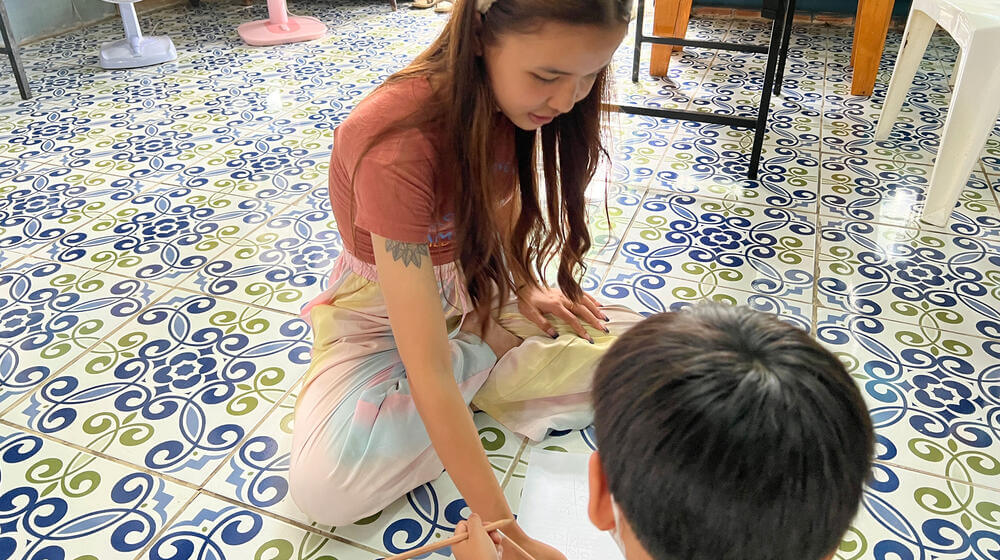What does adolescent pregnancy mean? – Breaking Down UN Terminology

Pregnancy and childbirth complications are the global leading causes of death for teenage girls – but there is so much that people don’t understand about adolescent pregnancy. Today, we’re defining the term adolescent, looking at some common causes for young pregnancy, and exploring the harms that early pregnancy causes to girls.
Who are adolescents?
Adolescence is the transitional phase between childhood and adulthood – a phase that begins around the same time as puberty. Often, this refers to the ages of 10-19, when children experience a series of physical and psychological changes.
Adolescent pregnancy refers to a pregnancy in a girl who is still in this transitional phase. The term is also used interchangeably with “teenage pregnancy”, a term that we find more accessible.

Teen mothers are not to blame
One of the most damaging misconceptions about adolescent pregnancy is that it is the girl’s fault for getting pregnant. Not only do girls in other societies and cultures often lack autonomy to refuse sex, but teenage pregnancy is also an indication of lack of access to contraceptives or knowledge of family planning.
Here are some of the most common causes of teenage pregnancy:
Child marriage
Child marriage is often the precursor to adolescent pregnancy – in fact, approximately 90% of young mothers are also child brides. The reasons for child marriage are as varied as they are complicated – but one truth that remains consistent is that it strips away a girl’s autonomy and she is more likely to face abuse at the hands of her partner.
Once a girl becomes a bride, she will then face intense cultural pressure to have children, regardless of her age. In some cultures, child brides will even be kept from resources and information that could keep them protected from pregnancy.
1 in 5 women alive today were married as children.

Sexual violence
Tragically, sexually abuse contributes to a large portion of adolescent pregnancies as well. Worldwide, 1 in 5 women report having been sexually abused as a child. In some nations, 1 in 3 girls have reported that their first sexual experience was either unwanted or coerced. In the case of domestic abuse, women and girls who are married are 53% less likely to use contraception.
In some nations, such as Uganda, when a man rapes a woman, he must then take her on as his wife, perpetuating a lifelong cycle of abuse. In other cultures where fertility is considered desirable, girls can be coerced to participate in sexual initiation practices as well.
When a girl is sexually abused, she loses her right to safety, dignity, autonomy, and respect. And yet, many societies blame girls for becoming victims – and becoming pregnant at a young age only adds fuel to the fire.
Lack of access and information
Half of all pregnancies in the world are unintended – but it isn’t because women and girls aren’t trying to avoid pregnancy. Right now, 218 million women and girls around the world who want to avoid pregnancy are unable to access modern and effective contraceptives. Lack of access to family planning, lack of information about contraceptives (including myths about side effects), and community discouragement are all factors that play into this shocking statistic.
For girls who are just beginning to explore their identities and sexuality, stigmas around sex can be especially harmful. In some cultures, teenage girls are told that they are too young to engage in sex, while simultaneously being encouraged, if not forced, into child marriages where sex is the expectation. The result is teenage girls across the globe being kept from information both about contraception and their own rights.

The dangers of adolescent pregnancy
The consequences of unintended pregnancy, especially for girls who are still children themselves, are too often disabling – and sometimes deadly. Every year, 12 million girls become pregnant. Of that number nearly 4 million girls attempt unsafe abortions, and this desperate attempt claims the lives of too many.
Adolescent girls experiencing an unintended pregnancy are also more likely to have birth complications. Some studies even tie unintended pregnancy to preeclampsia and postpartum hemorrhage, both major causes of maternal death. Girls are also significantly more likely to develop an obstetric fistula, a condition where a tear in the birth canal leads a woman to leak faces or urine. Despite making up 10% of all unintended births, girls account for 25% of obstetric fistula cases.
For young mothers who survive pregnancy and birth, they are also likely to suffer from the consequences of an early pregnancy throughout their entire lives. Often, young mothers will have to drop out of school and become financially dependent on their partners. Furthermore, a significant portion of teen mothers will have a second child while they are still a child themselves, perpetuating this cycle even further.

What UNFPA is doing to give adolescents a choice
We’re working to give women and girls the chance to choose if and when to get pregnant — no matter what. As the leading United Nations agency for sexual and reproductive rights, we’re addressing the issue of adolescent pregnancy by working to end incidents of violence against women and distributing family planning to all people.
Some examples of our work to empower women and girls to plan their pregnancies includes:
– Providing women and girls with the full range of family planning options, such as condoms, birth control pills, IUDS, and even male vasectomies.
– Reaching women and girls with comprehensive sex education, so they can make informed choices about their bodies
– Strengthening supply chains so women and girls always have access to family planning – even during emergencies.
In 2022, we helped 13.3 million women and girls prevent unintended pregnancies and distributed over 1 billion condoms. If you would like to learn more about our work to empower women and girls, you can read more here.